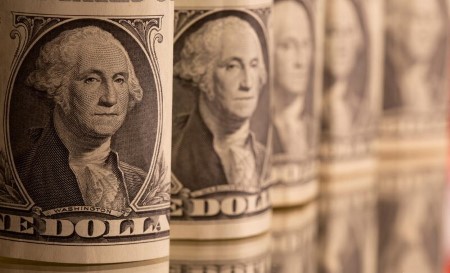




Inflation Update: Prices rise even slower in May
 DOWNLOAD
DOWNLOAD

Monthly Recap: BSP to outpace the Fed in rate cuts
 DOWNLOAD
DOWNLOAD

Quarterly Economic Growth Release: 5.4% Q12025
 DOWNLOAD
DOWNLOAD


TOP SEARCHES
FOREX-Dollar slides for second week as traders adjust Fed rate hike views

Adds analyst comment; updates prices
By John McCrank
NEW YORK, May 27 (Reuters) – The dollar edged lower on Friday on its way to a second-straight weekly decline as traders pared expectations for U.S. Federal Reserve interest rate hikes and as improving inflation and consumer spending data eased recession fears.
The dollar index =USD, which measures the safe-haven currency against a basket of six other major currencies, fell as low as 101.43, its weakest since April 25. On a weekly basis, it was down 1.24%, following a 1.45% decline the previous week. At 3:10 p.m. Eastern time (1910 GMT), the dollar was down 0.059% at 101.66.
“We continue to think that the best of the broader USD rally is behind us now and while the USD may not fall significantly yet, further gains seem unlikely,” strategists from Scotiabank said in a client note.
The “Fed is fully priced and expectations for rate hikes later in the year may be subject to revision if the economy slows more quickly than expected,” they said.
The greenback hit a nearly two-decade peak above 105 earlier this month but has declined along with outlooks for the magnitude of likely Fed rate hikes this year, which have been fueled in part by fears over runaway inflation.
“The dollar is losing altitude as the view of the Fed pausing rate hikes in the fall gains traction,” said Joe Manimbo, senior market analyst at Western Union Business Solutions.
Minutes from the Fed’s May meeting this week showed most participants believed 50 basis-point hikes would be appropriate at the June and July policy meetings, but many thought big, early hikes would allow room to pause later in the year to assess whether tighter policy is helping to tame inflation.
Although inflation continued to increase in April, it rose less than in recent months, data showed on Friday. The personal consumption expenditures (PCE) price index rose 0.2%, the smallest gain since November 2020, after shooting up 0.9% in March. For the 12 months through April, the PCE price index advanced 6.3% after jumping 6.6% in March. nL2N2XJ0RO
Benchmark U.S. Treasury yields were lower on Friday, but briefly bounced off session lows after the April inflation figures, which boosted hopes that the worst of soaring price pressures has passed. nL2N2XJ0RO
A separate report showed U.S. consumer spending rose more than expected last month as households boosted purchases of goods and services.
Next week’s key U.S. report will be the nonfarm payrolls numbers for May at the end of the week.
“The jobs data will shed some light on the scope for tightening from the third-quarter forward,” said Manimbo.
The euro has been the chief beneficiary of the dollar’s decline, but that momentum has also stalled as investors believe much of the expected rate hikes from the European Central Bank have been priced into current levels.
The single currency EUR=EBS was flat for the day at $1.0731, having earlier risen to its highest levels in a month. Sterling GBP=D3 was 0.16% higher at $1.2628.
The risk-sensitive Australian dollar AUD=D3 rallied 0.8% to $0.7156, while the New Zealand dollar NZD=D3 jumped 0.88% to $0.6535.
Better risk sentiment did not help bitcoin BTC=BTSP, however, which was 2.59% lower at $28,426, continuing this week’s gradual decline from the psychologically important $30,000 level.
World FX rateshttps://tmsnrt.rs/2RBWI5E
King dollarhttps://tmsnrt.rs/3NOP0lB
(Reporting by John McCrank; additional reporting by Saikat Chatterjee in London; editing by Susan Fenton, Kirsten Donovan and Jonathan Oatis)
((john.mccrank@thomsonreuters.com Twitter @jmccrank; 1 646 223-6643; Reuters Messaging: john.mccrank.thomsonreuters.com@reuters.net))
This article originally appeared on reuters.com





 By Reuters
By Reuters